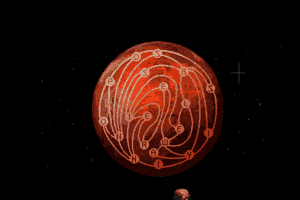

- #Mac emulator 7th guest install
- #Mac emulator 7th guest full
- #Mac emulator 7th guest software
- #Mac emulator 7th guest mac
With nesting enabled, a guest virtual machine can install its own hypervisor and run its own guest VMs. In this case, Hyper-V exposes the hardware virtualization extensions to its virtual machines. In contrast, the diagram below shows Hyper-V with nested virtualization enabled.
#Mac emulator 7th guest full
The Hyper-V hypervisor takes full control of the hardware virtualization capabilities (orange arrow), and does not expose them to the guest operating system. The diagram below shows Hyper-V without nesting. Nested virtualization makes this hardware support available to guest virtual machines. This prevents guest virtual machines from running Hyper-V.
#Mac emulator 7th guest software
Typically, once Hyper-V starts, it prevents other software from using these processor capabilities. Hyper-V relies on these processor extensions to run virtual machines (e.g. Modern processors include hardware features that make virtualization faster and more secure. Netsh interface ip add dnsserver “Ethernet” address= You may also want to assign a DNS server: Get-NetAdapter "Ethernet" | New-NetIPAddress -IPAddress 192.168.100.2 -DefaultGateway 192.168.100.1 -AddressFamily IPv4 -PrefixLength 24 Note that the gateway IP must point to the NAT adapter from the previous step.

Next, assign an IP address to the net adapter: Get-NetAdapter "vEthernet (VmNat)" | New-NetIPAddress -IPAddress 192.168.100.1 -AddressFamily IPv4 -PrefixLength 24Įach nested virtual machine must have an IP address and gateway assigned to it. New-NetNat –Name LocalNAT –InternalIPInterfaceAddressPrefix “192.168.100.0/24” Note that the IP addresses are just an example, and will vary across environments: New-VMSwitch -Name VmNAT -SwitchType Internal
#Mac emulator 7th guest mac
This approach is best suited for cases where MAC address spoofing is not possible, like in a public cloud environment.įirst, a virtual NAT switch must be created in the host virtual machine (the "middle" VM).

The second option relies on network address translation (NAT). Get-VMNetworkAdapter -VMName | Set-VMNetworkAdapter -MacAddressSpoofing On This is completed with the following PowerShell command. In order for network packets to be routed through two virtual switches, MAC address spoofing must be enabled on the first (L1) level of virtual switch. There are two options for networking with nested virtual machines: The incompatibility only occurs while Hyper-V is running in the VM. Note that simply enabling nested virtualization will have no effect on dynamic memory or runtime memory resize. For virtual machines without dynamic memory enabled, any attempt to adjust the amount of memory while it's on will fail. This means that even if dynamic memory is enabled, the amount of memory will not fluctuate. When Hyper-V is running inside a virtual machine, the virtual machine must be turned off to adjust its memory. You can disable nested virtualization for a stopped virtual machine using the following PowerShell command: Set-VMProcessor -VMName -ExposeVirtualizationExtensions $false For more information on installing Hyper-V see, Install Hyper-V.


 0 kommentar(er)
0 kommentar(er)
